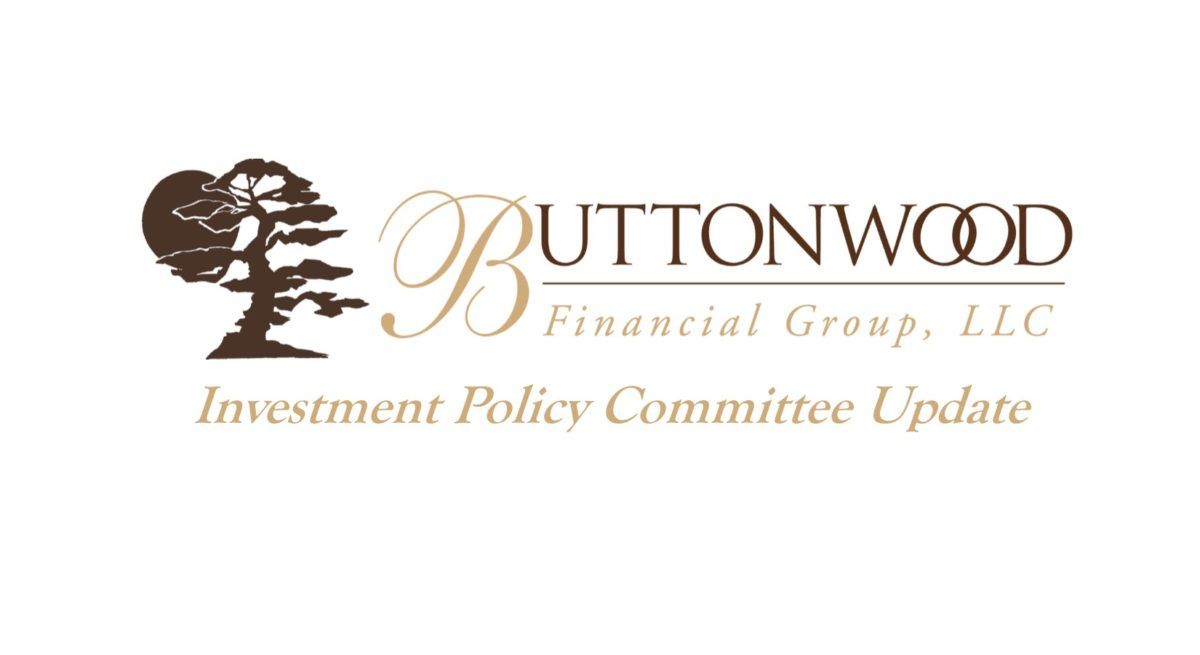Buttonwood Investment Policy Committee Update – August 2019
The month of August has been quite a ride for the stock market. Stepping back and taking a bit longer view: The S&P 500 reached a high of 2,872 on January 26, 2018, at the close on Friday August 16, the S&P 500 stood at 2,891 – less than 3/4 of 1% change.
As we regularly reiterate, the objective of our Investment Policy Committee (IPC) is to produce a more consistent rate of return over full economic cycles – both in good times of economic expansion as well as bad times (recession). With a more consistent rate of return we have a much higher probability of planning for successful financial lives!
We are often asked about the process our IPC follows when targeting a more consistent return. While there are too many complexities to review here, in summary our IPC focuses on the longer-term trends of the economic cycles and combines these views with shorter-term technical market trends.
Economic Cycles
Historically, the economies of the world grow, causing stock markets to go up, about 3/4 of the time. Recessions account for the other 1/4 of the time. The time between recessions is an Economic Cycle. As JP Morgan illustrates on page 16 & 17 of the Guide to the Markets , economic expansions and contractions are a normal part of our world. For a visual look of their interpretation of where world economies are today, see page 7 of Fidelity’s Quarterly Update.
Recently there has been quite a bit of discussion about the “inverted yield curve” (meaning short term interest rates are higher than long term interest rates). The reason this has become such a hot topic is that the yield curve has a good track record of forecasting growth (during ‘normal’ or ‘steep’ curves), and the recessions (‘inverted’ curve). Stockcharts.com provides a webpage showing how the bond market (interest rates on government bonds) and the stock market (S&P 500) interact with one another. Simply click on the vertical red line on the stock side… as you move it back in time you can see the structure of the yield curve. The last inversion was in 2007 and the one before was in 2000.
Thinking about what sectors we want to move money into, or out of; our IPC makes specific changes based on our perceived changes over both U.S. and foreign economic cycles. When business cycle and/or economic risks are higher, we proactively take steps to reduce investment risk found in stock and bond markets worldwide. Conversely, when economic risks are lower, we will take steps to increase investment risk. Our baseline allocation is diversified and designed to capture the various sectors of markets around the world.
Once sector targets are defined by the economic cycle, we then determine specific investments that best align with these targets. MFS provides an illustration of how various market sectors rotate from year to year as we move through economic cycles. Once individual investments are made, we implement a rigorous process to track and monitor each one.
Technical Trends
Beyond our tactical economic cycle allocation, we also overlay shorter term technical market indicators to determine ‘cash’ strategy (invest cash OR hold cash). Buttonwood positioning and strategy is communicated to clients via email and posted on our website.
Investment strategy, as defined by our IPC, is then combined with specific cash needs of each individual or family we work with in our strategy update meetings. If cash is needed soon, or investment assets are providing income, we increase cash, CD’s and short-term bonds as we move into the later stages of the economic cycle. This cash is designed to limit the impact stock market volatility can have.
With all the uncertainty in the world today, know that our IPC has a consistent proactive process at work ultimately designed for you to enjoy a much better night’s sleep. Looking forward, we believe the US and major global economies will continue to grow in the months ahead, however global growth is slowing. Trade wars and the upcoming election in November 2020 are only adding to the uncertainty, which leads to increased volatility. As such we will continue to proactively seek opportunities while remaining focused on downside protection.
Recent Buttonwood Articles
Are you ready to explore the benefits of your very own Family CFO?







